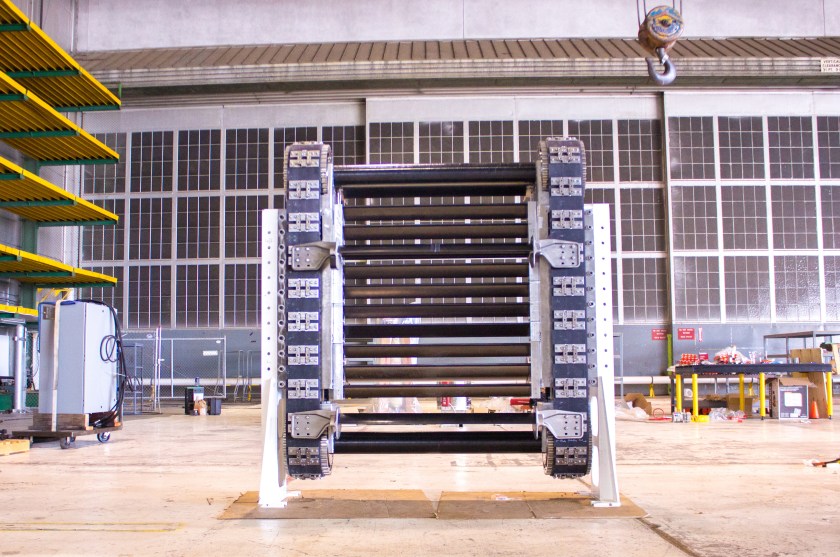An old aircraft hangar at Alameda Point will become the first production facility in the world for an innovative hydropower turbine. After two years of testing and design work, Natel Energy began outfitting the hangar this summer, which is just a few hundred yards from their headquarters in the former Control Tower for the Navy airfield. “By 2016 we expect to be producing 75 units a year,” said Chief Executive Officer Gia Schneider, “and reach 200 units a year by 2017.”

Formed by alumni of the Massachusetts Institute of Technology, Natel Energy set out to create a utility-scale hydropower system without the costs and environmental consequences of hydroelectric dams.
Natel Energy touts their turbine system, trademarked EcoSmartHydro™ Power, as an environmentally superior method of watershed development because it does not require flooding an entire ecosystem to drive an electric hydropower generator at a dam.
“Whereas conventional hydropower is characterized by a centralized approach to project planning and large environmental footprint, EcoSmartHydro™ Power is distributed, low-impact, yet still successful at the utility scale,” proclaims the company’s website. “Conventional hydropower plants are designed solely to maximize power output. EcoSmartHydro™ Power plants are designed to maximize power output while maintaining the health of watershed ecosystems.”
When installed in streams and small rivers, the system allows for young fish to travel downstream and through the system unharmed. Traditional fish ladders can be installed for spawning fish travelling upstream.
The heart of the system, called a cassette, is about the size of a king size bed. It consists of a conveyor belt of blades that are moved as water flows through. A generator connected to one or both of the conveyor shafts generates electricity.
The system can be installed virtually anywhere there is flowing water, such as irrigation canals, water supply channels, thermal power plant water outfalls, and existing non-hydroelectric dams. The Natel Energy system is able to generate electricity with relatively small drops in elevation because it’s based solely on water flow, not water pressure.

In December 2013, Natel Energy got a boost from the U.S. Department of Energy with a $2 million tax credit under the Advanced Energy Manufacturing Tax Credit program. The money for product development and manufacturing, however, is coming solely from investors. “We don’t get any benefit from the tax program until we start selling our product,” said Schneider.
“The company currently has 14 employees, and we will be adding 80 to 90 people as production grows at Alameda Point, with up to 35 of those in manufacturing,” said Schneider. “Our goal is to give special attention to hiring and training of veterans and to make use of Department of Energy vocational training programs.”

All of the parts and components of the turbine are manufactured in the United States. Schneider said that working with parts suppliers in the U.S. during the product-development phase made the process logistically less stressful and time-consuming. For some of their parts, the company would not have gained any cost advantage by going outside the U.S., according to Schneider. She said that once production levels reach the point where new production facilities are being added elsewhere in the U.S. or the world, some parts may be sourced from outside the country.

Videos made by Natel Energy this year offer a look into the elaborate parts testing program the company has been running at their Alameda Point headquarters, as well as a look into the process of setting up their production facility. An animated video shows how their system works in the field.
Videos by Natel Energy on company video site
Click on titles to view videos
Natel Energy News Page
Click on any photo below for slideshow format.














